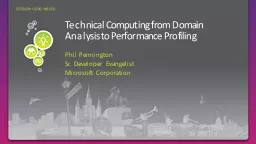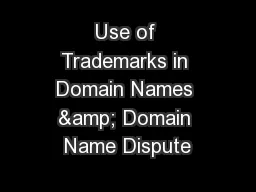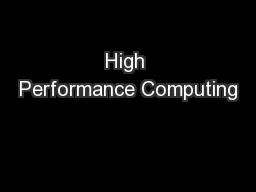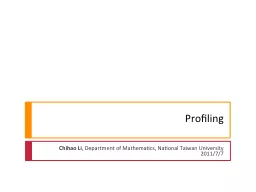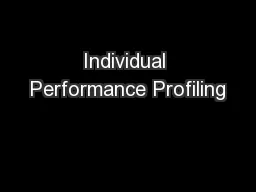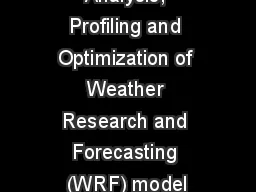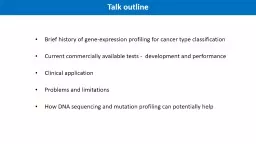PPT-Technical Computing from Domain Analysis to Performance Profiling
Author : jane-oiler | Published Date : 2018-09-22
Phil Pennington Sr Developer Evangelist Microsoft Corporation SESSION CODE WSV325 Required Slide AGENDA TechnicalComputing Parallel Platform Tools Solvers Analysis
Presentation Embed Code
Download Presentation
Download Presentation The PPT/PDF document "Technical Computing from Domain Analysis..." is the property of its rightful owner. Permission is granted to download and print the materials on this website for personal, non-commercial use only, and to display it on your personal computer provided you do not modify the materials and that you retain all copyright notices contained in the materials. By downloading content from our website, you accept the terms of this agreement.
Technical Computing from Domain Analysis to Performance Profiling: Transcript
Download Rules Of Document
"Technical Computing from Domain Analysis to Performance Profiling"The content belongs to its owner. You may download and print it for personal use, without modification, and keep all copyright notices. By downloading, you agree to these terms.
Related Documents

